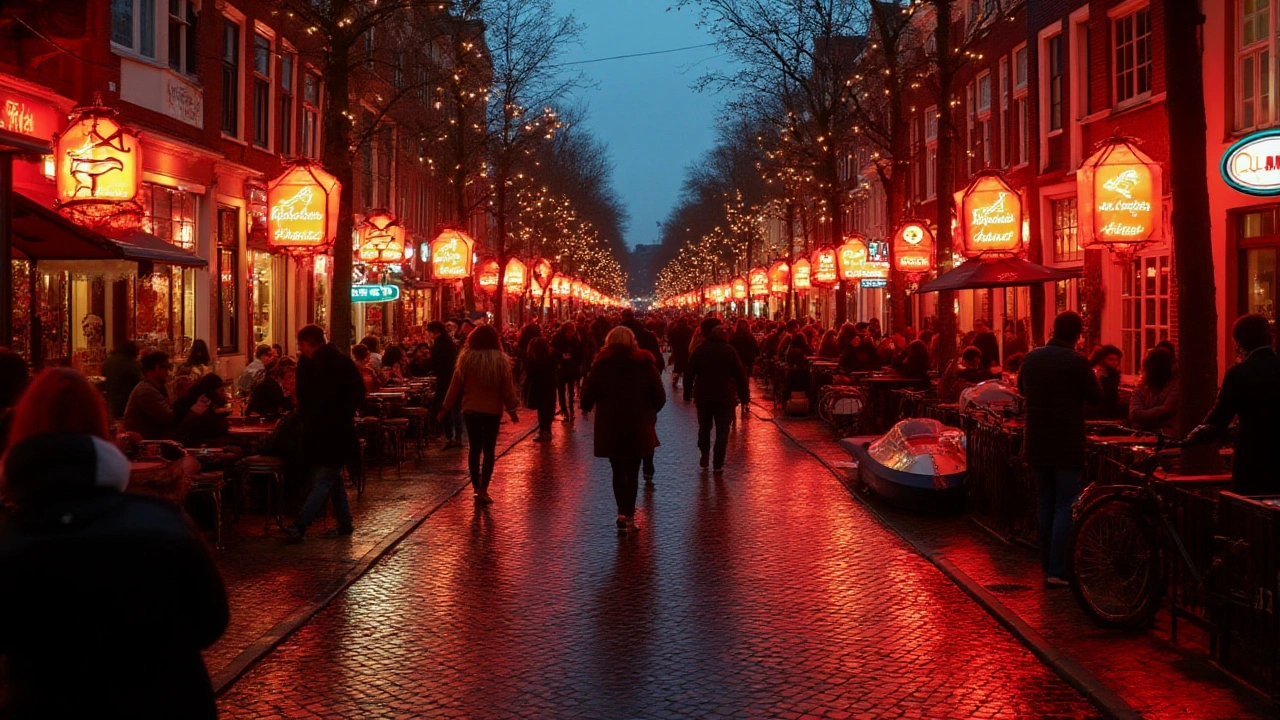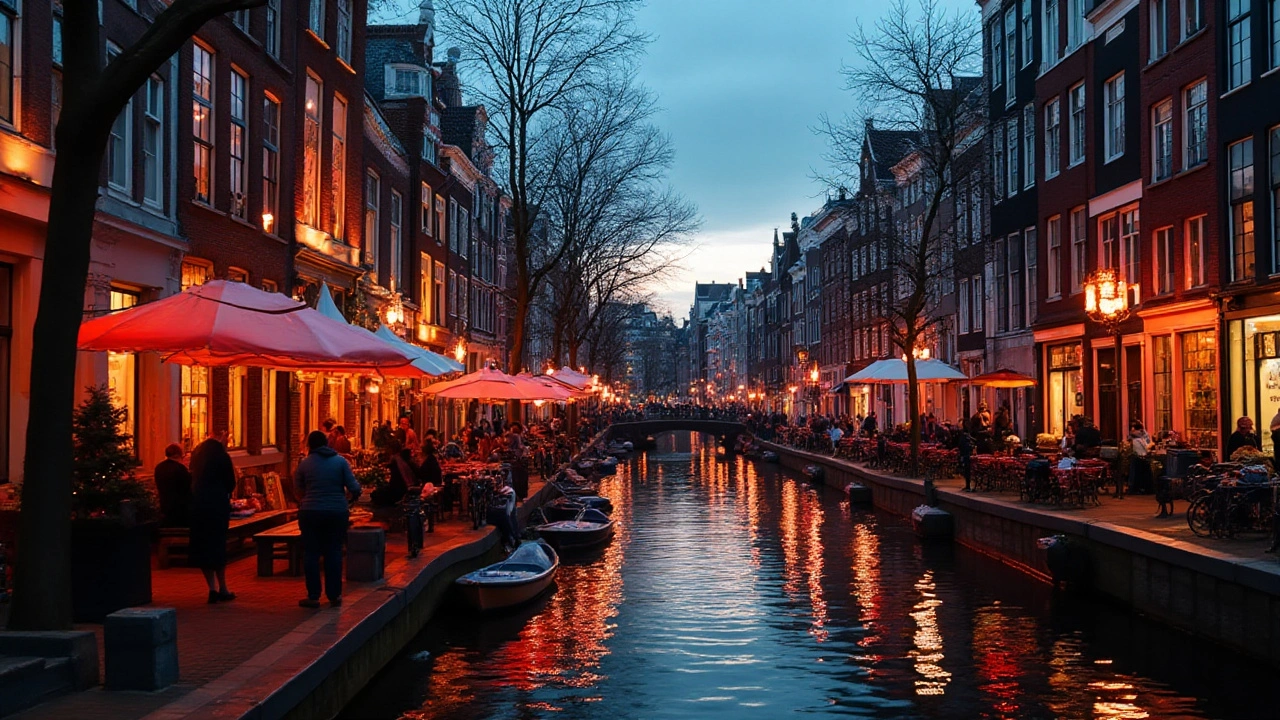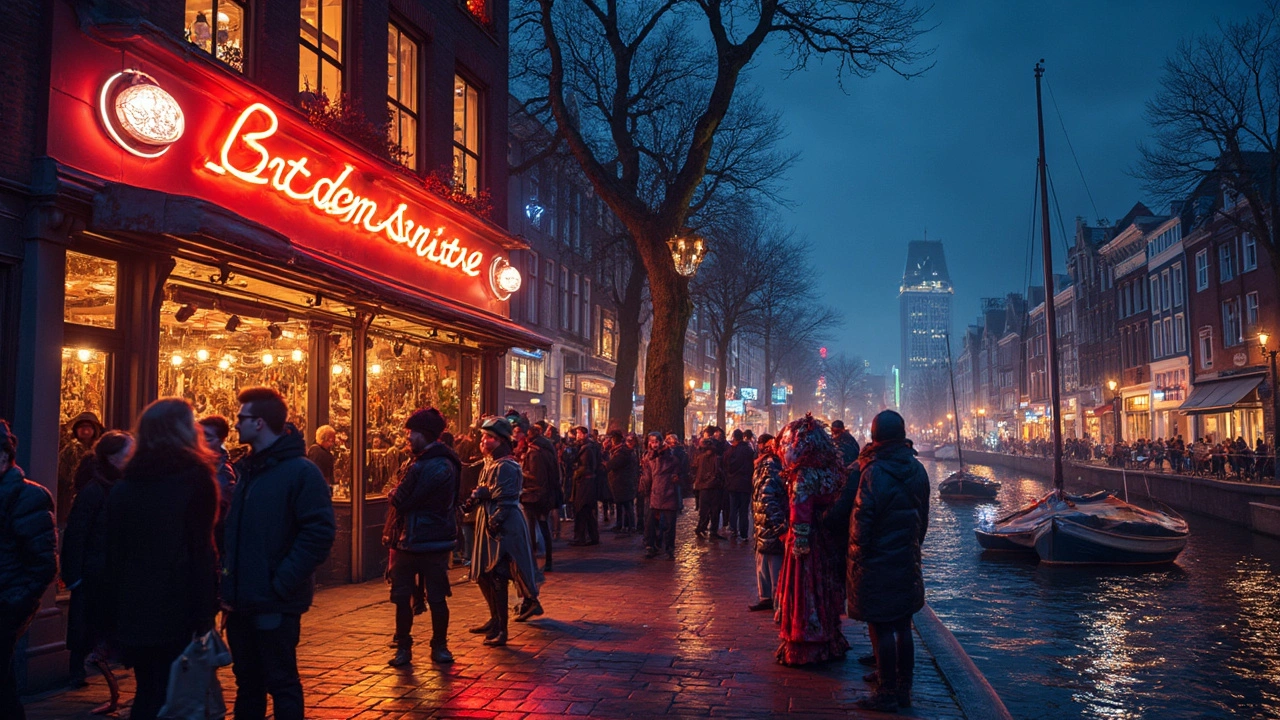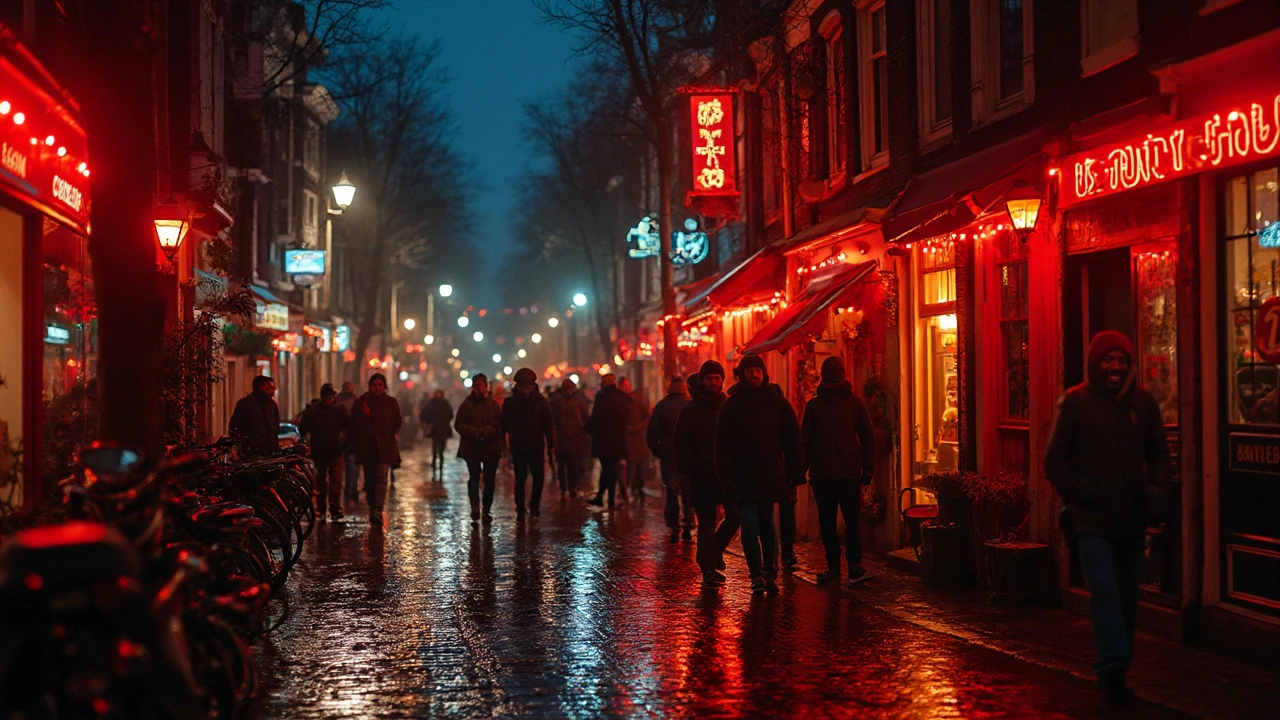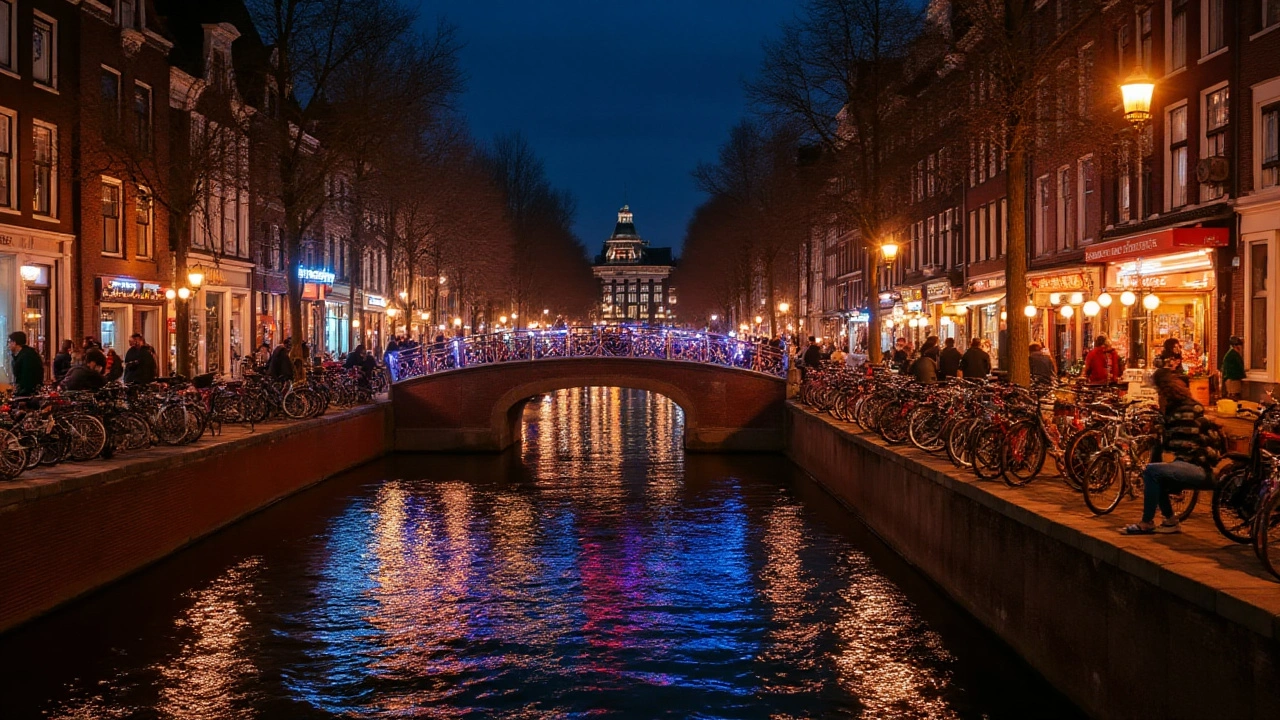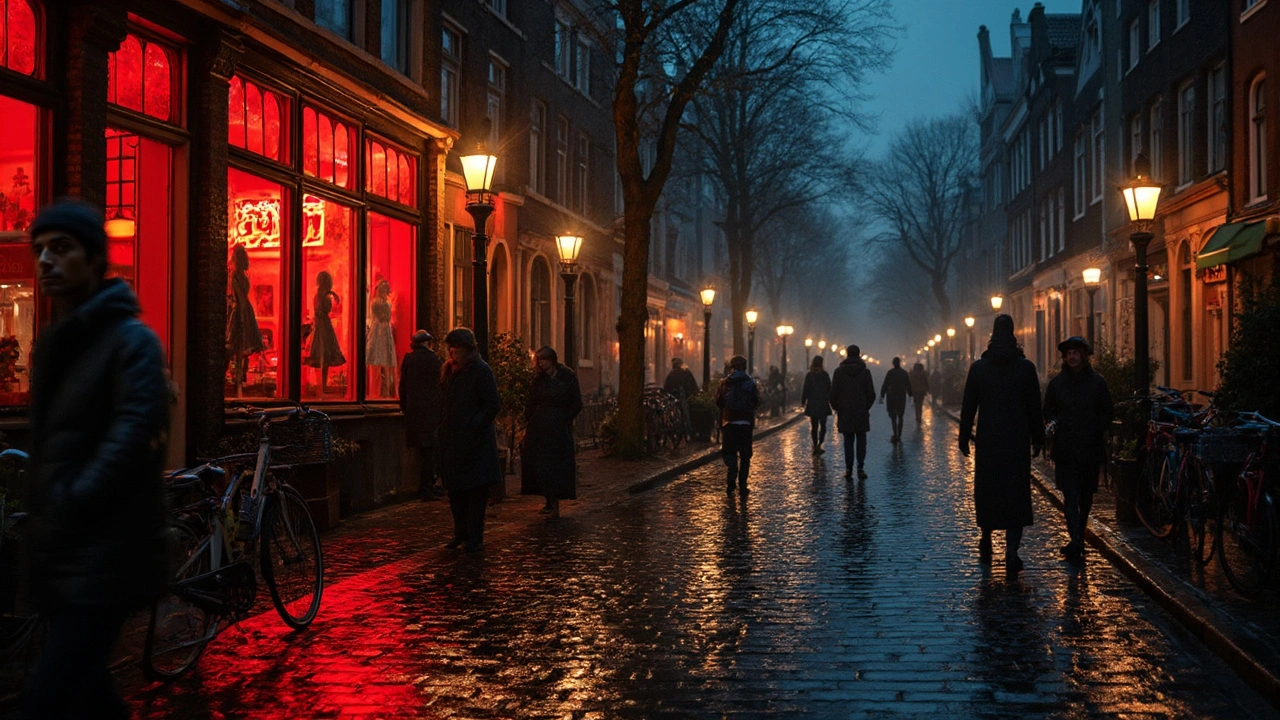
Long before the coffee shops and pancake houses, Amsterdam’s open approach to sex work sparked curiosity—and, yes, plenty of gossip—around the world. Between neon-lit windows and mysterious alleyways, stories swirl about what really goes on in the city’s red light district, but few people truly know how it all fits together. Is it all just overhyped legend, or is there real substance behind Amsterdam’s reputation for sex work, especially the discreet world of call girls?
History and Culture: Amsterdam’s Relationship with Sex Work
If you think tolerance for sex work is a modern phenomenon in Amsterdam, think again. This city’s history is laced with a pragmatic acceptance of vices, going back to the 16th century when merchant sailors filled the canals. What started as informal encounters slowly morphed into a recognizable industry, especially as municipalities realized they could tax and regulate it. The famous De Wallen, or red light district, is about as historic as the canals themselves. Even the oldest church in the city, Oude Kerk, stands right in the heart of this area—proving the point that sex, religion, and business have a quirky way of overlapping in Amsterdam.
This pragmatic approach means people visiting Amsterdam see sex work treated with less shame or secrecy than in much of the world. Local artists, city guides, and even moms will talk about “window girls” or escorts matter-of-factly. This openness led to normalization. More than just a thrill for tourists, it’s a real part of the city’s character. In fact, the Netherlands was the first country in the world to legalize brothels in 2000. That legal step gave sex workers some rights—on paper, anyway—to operate as independent entrepreneurs and have actual employment contracts.
Contrast that with my home—my cat Whiskers gets more legal rights than most sex workers in a lot of countries. But toss any ideas that Amsterdam is a free-for-all. The Dutch are experts at balance. There's a lot of strict regulation, from regular health checks to mandatory registration with the Chamber of Commerce if you want to work as a legal call girl. Think IKEA-level organization but with red neon lights.
Over the last decade, city officials started ‘Project 1012’—named after the district's zip code—to clean up visible crime, close shady brothels, and gentrify the area. That means fewer windows, more craft beer bars and fashion boutiques. Locals argue over whether this helps or just pushes things underground. Still, most call girls now operate quietly, via agencies or as independents, far from the peeping eyes of photo-snapping tourists.
Understanding the Day-to-Day Life of Call Girls
So, what’s it actually like to work as a call girl in Amsterdam? This scene isn’t just about standing in a window. The more discreet side of the business—call girls—operates through online platforms, word-of-mouth, and established escort agencies. Think carefully managed profiles, multiple language skills, and honest conversations about services and boundaries. The market is competitive: many women have college degrees and speak several languages. Some even treat it as a side gig to other work. That’s a far cry from most movie stereotypes.
Agencies act as middlemen, handling bookings, background checks, and screening clients. For independents, there’s even more hustle involved: building a strong online presence, keeping private social lives separate, and muscling through the city’s building regulations to find safe and legal meeting places. The workweek is shaped more by market demand than a traditional 9-to-5 clock. Some call girls see regular clients, building long-term arrangements with set rules. Others work only weekends, catering to partygoers and tourists who roll into the city in droves.
Most call girls in Amsterdam are Dutch or from other EU countries, but you’ll also find women (and men) from South America, Eastern Europe, and Asia. This multicultural mix reflects the city’s vibe. Safety is a massive focus. Health checks are non-negotiable, both mandated by law and enforced by agencies. There are strict rules about condom use and confidential handling of personal information. Amsterdam’s police do conduct spot checks to flag unlicensed operations, but for the most part, sex workers say law enforcement is more concerned about safety than shaming anyone.
But let's keep it real—challenges are everywhere. There’s a stigma, even here. Some call girls struggle with privacy, mental health, and aggressive or disrespectful clients. Exploitation hasn’t vanished either; undocumented workers or those outside of legal channels have a rougher experience, stuck in the shadows. That’s why you’ll find advocates in Amsterdam pushing for stronger protections and more public support.
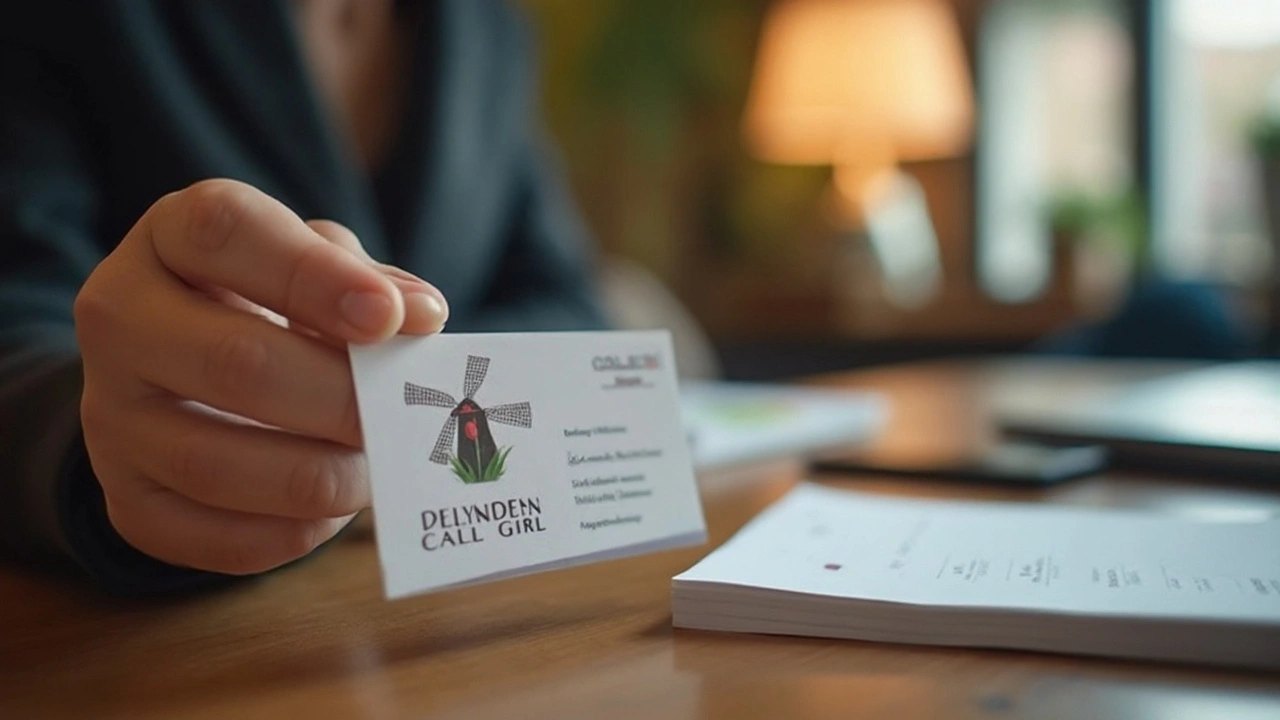
The Legal Side: Dutch Sex Work Laws Explained
Alright, let’s untangle the legal spaghetti. The Netherlands is famous for liberal policies, but that doesn’t mean anything goes. Since 2000, brothels and window prostitution are fully legal—provided you stick to the rulebook. Here’s how the framework actually works for call girls and their clients:
- You must be 18 or older to work legally as a sex worker. Agencies can only hire adults, and everyone must show valid ID.
- Registration at the local Chamber of Commerce is required. This means legal call girls operate like other freelancers, filed under codes like “personal services.”
- Agencies need municipal permits and have to meet safety and workplace standards—think alarm systems, panic buttons, and regular visits from health inspectors.
- Health checks are legally recommended but not compulsory. Most reputable agencies will demand regular sexual health check-ups.
- Advertising is regulated. Sex workers can promote themselves online, but not on the street or in public places.
The city’s ‘Red Light’ windows are mostly confined to a few zones, and over the past decade, officials closed more than a third of them. This shift made independent work and escorting even more popular. Data from the City of Amsterdam suggests there were nearly 800 licensed sex businesses before the crackdowns, with about 300 left by 2024.
The Dutch government doesn’t mess around with illegal brothels or human trafficking. There are hotlines for sex workers to report abuse anonymously, and stings happen regularly on suspected traffickers. Clients aren’t immune—soliciting minors or unlicensed workers will get you a hefty fine or a court date. On the upside, working above board means access to practical support: legal help, STI testing, pensions, and insurance.
Still, legal doesn’t always mean perfect. Some call girls say registration puts their privacy at risk, with their names showing up in public databases unless they opt for anonymity (which comes with extra hoops). Plus, strict zoning laws make it hard to find safe, affordable working spaces, nudging some women back to less regulated setups. The city’s ongoing debate: how to keep the business transparent without kicking the most vulnerable workers out of sight.
| Year | Number of Licensed Sex Businesses (Amsterdam) | Window Booths (approx.) |
|---|---|---|
| 2010 | ~800 | 450 |
| 2018 | ~420 | 320 |
| 2024 | ~300 | 250 |
How to Approach the Call Girl Scene as a Visitor
Let’s say you’re in Amsterdam and curious about meeting a call girls Amsterdam—what’s the right way to go about it? First, ditch any movie-fueled ideas about “secret passwords” or dark alleys. Everything is highly organized. Online is king: most reputable call girls work with escort agencies or legit websites. You’ll usually find verified profiles complete with photos, services, rates, and what kind of clients are welcome. Communication is upfront. Don’t expect or try to haggle.
Pro tip: stick with agencies or independent workers that are properly registered. Not only does this reduce the risk of scams or legal trouble, but it’s way safer for everyone. If you see an offer that looks too good to be true, it probably is—nobody’s giving out real “bargains” in this market. Also, never take photos without permission. Even walking through the red light district, flashing your camera around is seen as both rude and a security risk.
- Always agree on terms up front. Clear boundaries, limits, and pricing are standard practice.
- Make sure you’re in a safe, neutral location. Hotels often require you to register your guest, and some even ban sex work outright.
- Carry cash. Some call girls accept online payment or cards, but cash remains king for privacy.
- If you feel uneasy, leave. Most agencies offer customer support, and safety is key for both sides.
- Respect privacy. Many call girls use aliases and keep strict boundaries for personal safety.
If you want information in person, the Prostitution Information Center, right at the edge of the red light district, offers chats, brochures, and even guided tours run by ex-sex workers. They’ll tell you point-blank what’s safe, legal, and respectful. And like the rest of Amsterdam, respectful curiosity goes a long way here.
Beware: police do make undercover checks. If someone approaches you on the street to offer services, best to decline. Licensed workers don’t hustle on corners—instead, they rely on established channels. Anyone pushing otherwise likely isn’t working legally.

Misconceptions, Realities, and Tips for Responsible Engagement
Time for some myth-busting. Call girls in Amsterdam aren’t uneducated, desperate, or powerless. Many are well-traveled, speak several languages (my neighbor’s a lawyer who moonlights on weekends—no joke), and pick their clients carefully. There are both men and women in the business, and LGBTQ+ visitors aren’t left out; Amsterdam’s escort scene is as diverse as the city itself. Still, there’s plenty of misinformation thanks to sensational headlines and TV dramas.
Here’s what gets missed: Legal doesn’t mean stigma disappears. Even in a place as chill as Amsterdam, sex workers face judgment outside the city center. Media often gloss over safety issues, showing only the glitzy side or, conversely, making it all sound dark and dangerous. Reality? It’s a job with ups and downs, like any other, just with extra paperwork and risk. Tech has shifted the balance too. Social media and review platforms mean sex workers can gauge which clients to avoid, and good service gets talked about more than ever—but privacy can suffer.
If you’re planning to engage, here’s a basic code of conduct:
- Treat all arrangements as professional. No personal questions, disrespect, or entitlement.
- Respect the boundaries and stated rules of the call girl or agency. This isn’t an a la carte menu—you don’t get to demand extra services.
- Never out anyone you meet or share personal details online.
- Anyone promising illegal services (no condoms, underage workers, drugs) is breaking the law—report such offers to local authorities.
- Educate yourself: Agencies have FAQ pages, and guides like the PIC provide eye-opening tours, especially if you want to know the human side of the trade and not just the rumors.
If you’re a first-timer, don’t be shy to ask questions. The best agencies and workers will be clear about expectations. Remember, call girls have full rights to refuse clients—no means no. Leave a review if you had a positive experience, but do it discreetly, following established etiquette.
One last bit—don’t romanticize the work, and recognize you’re supporting someone who might be paying tuition, supporting a family, or just making a living in an unusual but legitimate way. Think about it: The city that gave you Rembrandt and stroopwafels also has one of the world’s most regulated and talked-about sex industries. If you treat it with curiosity and respect, you’ll see there’s way more to Amsterdam’s call girls than the cliché neon lights.

